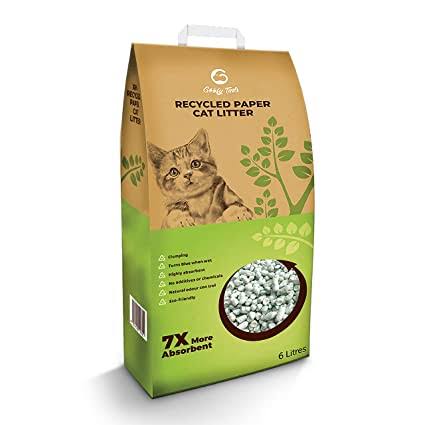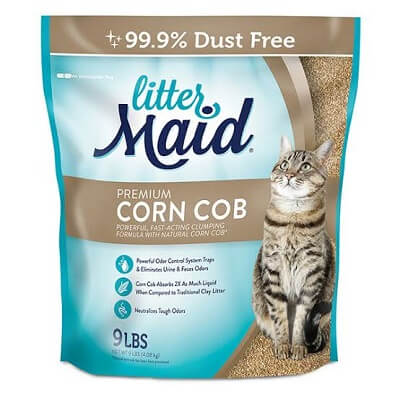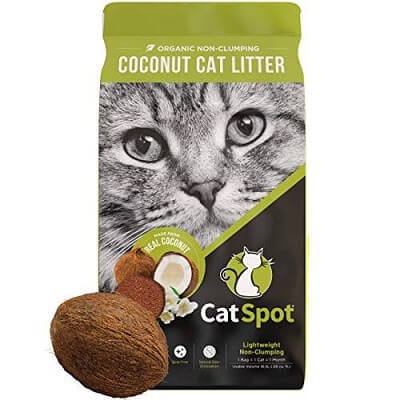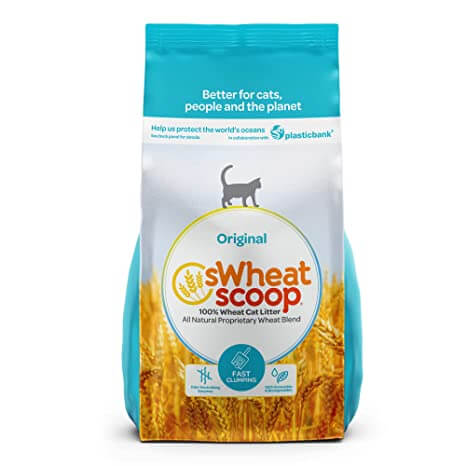Cat Litter AlternativesClay, also referred to as sodium bentonite, is a typical component found in conventional cat litters. Depending on the brand, clay cat litter is widely accessible and generally affordable. Traditional clay kibble absorbs liquids like cat urine and, over time, solidifies. When something becomes solid, it can no longer hold fluid and frequently produces odor. Both environmentally harmful and not biodegradable, this kind of litter should not be used. Clay litter must be regularly changed to keep odours at bay. Cats may try to eat things that aren't food as they get older. Dehydration, diarrhoea, airway obstructions, and even death for your cat are all potential effects of ingesting clay cat litter. Being a pet owner, the cost of bentonite toxicosis treatment can be horrifying. The vast array of options that are available to cat owners is generally unknown. To assist you in selecting the ideal litter for your feline companion, we have compiled a list of the top five best cat litter substitutes. 1. Paper Litter
Since paper is made from recycled materials, it is a common type of natural litter. It is perfect for cats who have had surgery because the pellets won't contaminate the sutures. Pellets almost completely eliminate dust, which is advantageous for cats with eye, respiratory, or urinary tract infections. There is no tracking if there is no dust. It is crucial to remember that some cats might require some time to get used to the pellets because they are unfamiliar with them. Pellets do not clump as well as clay, which could make cleaning up after pets more difficult. Depending on the natural scent of your cat's urine, the lack of clumping might produce an odour. The majority of the time, paper litter cannot be flushed; however, before discarding it, make sure to check the brand's website. 2. Corn Litter
Usually manufactured from whole-kernel maize that is 100% natural, corn litter is a specific kind of litter. Because of their size, pellets are a good option for kittens. When your cat's paws touch the corn, it doesn't feel as soft against them as other natural materials. For no other reason than texture, some cats might not utilise their litter box. Because corn litter forms tidy clumps, it is perfect for both cat owners and their pets because it is less untidy. Less food gets stuck to the litter box's bottom and sides due to the dense clusters. Since maize is used in place of clay in this type of litter, it has a different smell than typical litter. This smell is disliked by some owners, while others prefer it to the smell of their last litter. Since corn litter generates dust, cats with asthma may find it unsuitable as a litter option. Even though the bag doesn't specifically state so, some corn-based litters can be flushed. Before flushing litter down the toilet, it is best to verify the brand's website. 3. Coconut Cat Litter
Only coconut shells are used to make coconut kitty litter. It is hypoallergenic since it doesn't include any potentially dangerous substances or allergies. Since the coconut formula has no scent, it does not first smell. Due to the fineness of the litter, dust gets tracked. The particles are too small to clump, so as time passes, it starts to smell. Coconut litter can be thrown out in flower beds, the yard, or even a compost bin, unlike other types of litter. This kitty litter doesn't create any garbage and doesn't fill up landfills. 4. Wheat Litter
'Secondary wheat,' also known as grain that is not of a high enough quality to be used as food, is used to make wheat litter, a type of cat litter. Similar to traditional clay litter, the granules feel and appear similar. For picky cats, it is the perfect litter because it is neither too coarse nor too fine. Although wheat clumps well, it also produces soft masses resembling clay litter. The bottom and sides of the box frequently become covered in soft clumps. This litter may be a little too messy for some pet owners to clean up. The litter either effectively or adequately controls odours, depending on the clumps that develop. The softer the clusters, the weaker it gets. This litter needs to be changed frequently to prevent soft masses and bad odours. Because the granules are similar to clay litter, tracking and dusting happen when using this litter. To get rid of the wheat crumbs lying around your house, sweep or vacuum every day. This alternative to cat litter is the one that most closely resembles regular litter. While some wheat litters make the claim that they can be flushed, it is best to follow the directions provided on the bag or the manufacturer's website to prevent any septic problems. Wheat is biodegradable, making it the perfect choice for pet owners seeking an environmentally friendly product.
Next TopicCheese Alternatives
|
 For Videos Join Our Youtube Channel: Join Now
For Videos Join Our Youtube Channel: Join Now
Feedback
- Send your Feedback to [email protected]
Help Others, Please Share









